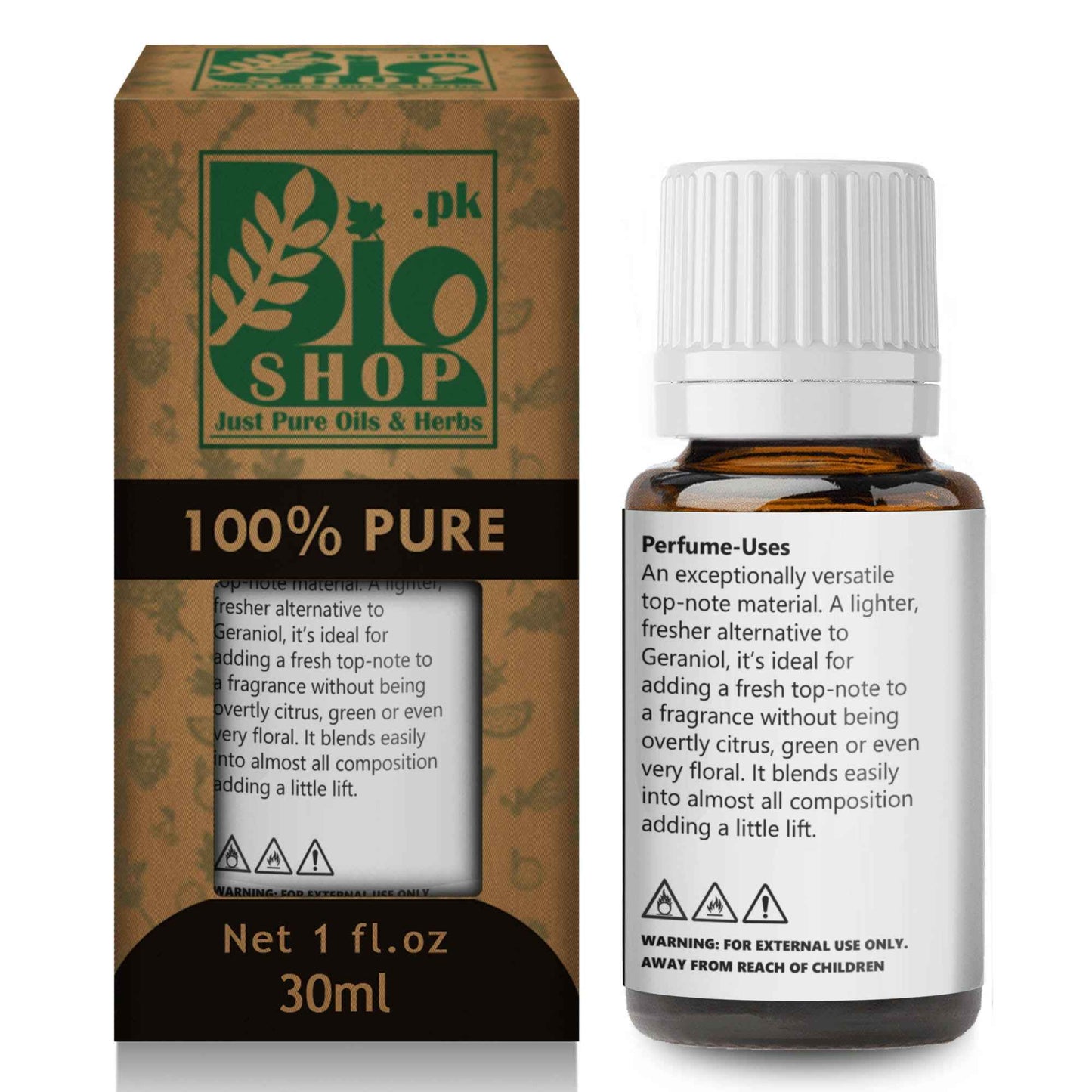Bio Shop
Geranyl Acetate
Geranyl Acetate
Olfactory Notes: Floral · Rose · Fruity · Citrus · Fresh · Green · Slightly Herbal
Couldn't load pickup availability


Explore
Information About Geranyl Acetate
Key Features
- Bright, rosy-floral ester with light fruit and green nuance
- Found in many essential oils—mimics natural floral-citrus freshness
- Excellent in lavender blends, rose accords, fougères, and citrus perfumes
- Adds radiance, mild sweetness, and natural lift to top and heart notes
- Ideal for attars, oil perfumes, mists, incense blends, and solids
About Geranyl Acetate
Geranyl Acetate is a naturally-inspired floral-citrus aroma chemical known for its fresh, rosy, fruity, and slightly green scent, often found in rose, lavender, and citronella oils. It’s widely used to add floral radiance, fruity freshness, and natural elegance to perfumes—especially in florals, citrus colognes, fougères, and herbal compositions.
Its versatility and mild diffusion make it perfect for blending florals with citrus, creating sparkling top notes, and supporting rose-like floral hearts.
Technical Data
INCI Name: Geranyl Acetate
CAS Number: 105-87-3
Molecular Formula: C12H20O2
Appearance: Clear, colorless to pale yellow liquid
Odor Description: Fresh floral, rose-citrus, fruity, slightly herbal
Purity: 98%+
Boiling Point: ~245°C
Flash Point: ~105°C
Density: ~0.94 g/cm³
Solubility: Soluble in alcohol, oils, and DPG
Recommended Usage Level: 0.5%–5% in final perfume concentrate
Category: Floral-Fruity Modifier – Top/Heart Note – Perfumery Use
Application Tips
Use 1–4% to bring floral lift and rosy freshness to fruity florals, herbal musks, or clean citrus blends.
Pro Tip
💡 To brighten your rose or citrus floral heart 🌹🍋, use 1–4% Geranyl Acetate in your oil-based or alcohol-based blend.
🌼 Blend with geraniol or phenyl ethyl alcohol for a soft blooming rose accord.
🌿 Add to lavender or petitgrain compositions for herbal-floral colognes.
🍊 Use with bergamot, neroli, or aldehydes to open your perfume with freshness.
🔄 Let your formula rest for 3–5 days for complete integration and balance.
⚠️ Moderately diffusive—works best layered with stronger florals or fruits.
FAQ
Q1: What does Geranyl Acetate smell like?
It smells like a fresh rosy-floral with slightly fruity and citrus-green undertones—bright, soft, and elegant.
Q2: Is it found in natural sources?
Yes, it naturally occurs in rose, citronella, lemongrass, and lavender oils, but is often used in purified form for consistent results.
Q3: Can it be used in oil-based perfumes?
Absolutely! It’s oil-soluble and blends well in attars, roll-ons, incense oils, and solid perfume formulations.
Q4: What types of perfumes benefit from it?
Ideal for floral, citrus, fougère, herbal, and cologne-style perfumes.
Q5: What does it pair well with?
Best with geraniol, citronellol, linalool, nerol, aldehydes, rose, violet, and green-herbal top notes.
Documentation
Upon request, we will provide.
Where Can You Safely Use Geranyl Acetate?
Discover how Geranyl Acetate performs across different applications—rated for safety, stability, and effectiveness.



